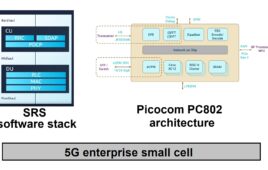At Mobile World Congress Americas, it seemed like almost everyone couldn’t stop talking about 5G. From exhibition booths to seminar panels, the upcoming mobile network is generating an astronomical amount of hype, despite its projected release date to be between 18-24 months from now. While all of us are undoubtedly looking forward to the real-time connectivity, high-definition and high-quality streaming, and multi-device handling capabilities, 5G most likely won’t be perfect upon its public inception as there will inevitably be certain flaws and kinks to work out. Nonetheless, industry entities are closely monitoring the biggest obstacles that the road to 5G will present as they try to achieve their ultimate goal of bringing the widespread availability of this next-generation service closer to reality.
The 5G Networks Keynote Panel at Mobile World Congress Americas spent time covering the biggest challenges that companies and industries involved with the next-generation network are up against. According to the panelists, one of the lingering challenges that’s been especially bothersome has been figuring out the balance of use cases.
“With so many use cases, you’re trying to find out ways to be able to do the corporate slicing needed to make sure you’re meeting all the needs coming at you,” said Greg Mansfield, VP of RAN and Device Design at AT&T, who was one of the participating panelists. “You have to know the information on what’s going on in the network and what each individual is trying to do with that network. That’s when we get into the whole security aspect, which we’re all involved in and trying to figure out.”
Mansfield went on to mention how slicing becomes easier when a network is virtualized, since it’s common for hardware to have different instances of software.
Astoundingly (but understandingly) enough, the panel also cited the need for openness between corporate and industry entities as one of the more pressing challenges along the path to 5G.
“Openness allows you to start running lots of software capabilities back in that virtualization, enabling you to innovate on top of basic capabilities,” said Boingo Wireless CTO Derek Peterson, who also participated on the panel. “Being able to manage (at user-level) traffic based on non-real-time IoT devices versus high-def ones with augmented reality are entirely different use cases and will accumulate disproportionate findings.”
In addition, the panelists believed openness should lead to the ability of having industry facets like software with algorithms on top, allowing you to manage traffic through the slices mentioned earlier, in a more efficient and effective manner.
“Slicing is about being able to see them (the actual slices). If you’re running a WiFi network and someone else is running a cellular network, you’re not going to see much of the other entity’s traffic, which can lead to challenges that can unknowingly contain a communicative solution – i.e. openness,” Mansfield added.
Simply put, if you’re not open enough to share your information with other entities working towards the same goal or on the same project, it becomes increasingly challenging to try and deliver the best user-experience for the customer.



